For someone new to being a survivalist, building your first bug out bag can seem like a big task. Everybody you read about has been tweaking theirs for months or even years and has a pile of gear built up. It’s hard to know where to start, but if you cover all of the basics in a survival situation you will still be much better off than 99% of people.
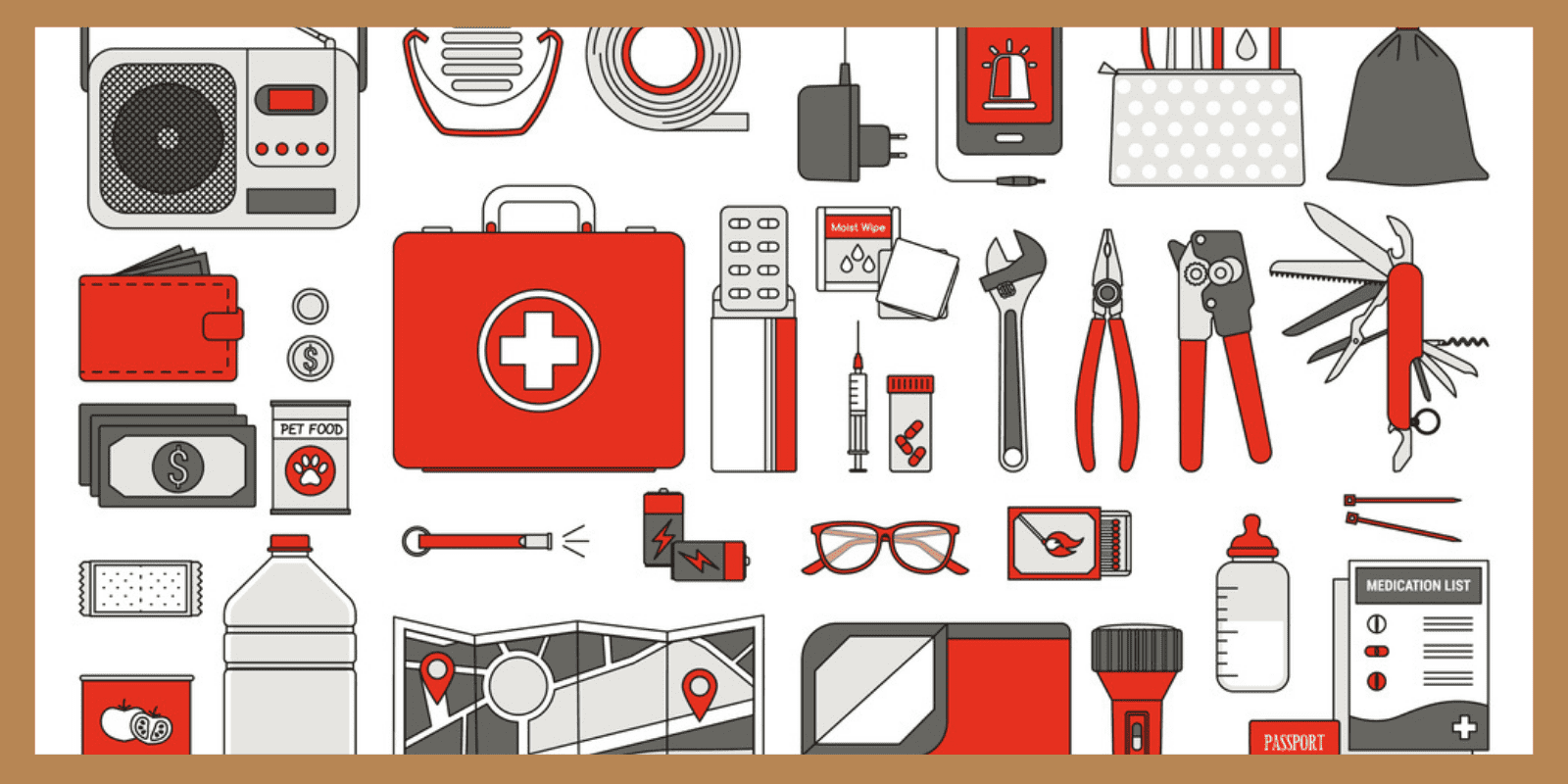
A Bug Out Bag, also called a BOB, I.N.C.H Bag (I’m Never Coming Home Bag), Get Out of Dodge Bag (GOOD Bag), or 72 Hour Bag is usually designed to get you out of an emergency situation and allow you to survive self-contained for up to 3 days. A lot of people plan their Bug Out Bag to sustain them for much longer than that, but there is always a limit to what you can carry on your back and a 3-day target is a good place to start.
SKIP AHEAD
Which Backpack/Rucksack/Bag To Use?
The first thing to discuss is what kind of bag to use.
We get asked this question a lot. At the end of the day, the actual backpack (or rucksack) you use does not really matter (to a certain point). If you have a limited budget, it can be a traditional school backpack just to get things started. Again, just putting something together makes you more prepped than 99% of people. School backpacks are good “enough”; think about it, those bags can handle multiple textbooks. Those backpacks can definitely hold your gear.
However, there are specialized backpacks that have various compartments, even concealed ones, and also MOLLE technology. This allows you to carry more in less space.
Our team highly recommends the following backpack:
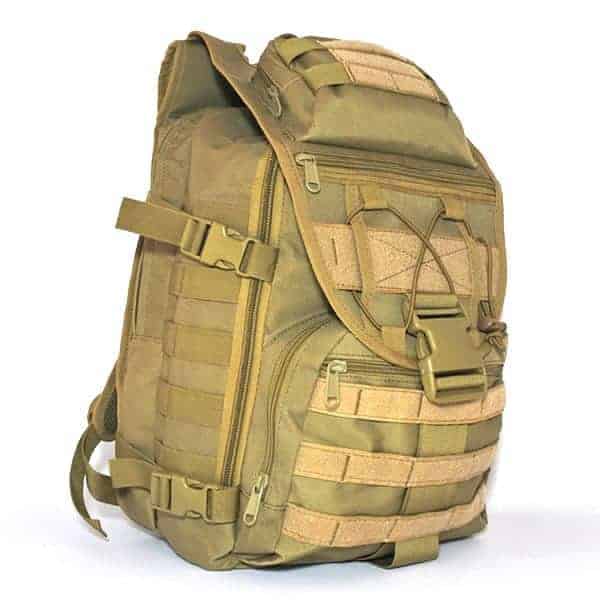 #1 Bag
|
|
View Latest Price |
Note that most quality backpacks will get the job done but have a specific backpack made for survival purposes has its perks. If you want a detailed deep-dive, check out the survival backpacks article here.
Now, let’s get into what types of gear you must have in your BOB.
7 Types of Gear Essential For a Bug Out Bag: DIY
Here are the 7 basic types of gear you will need for your Bug Out Bag:
1. Water
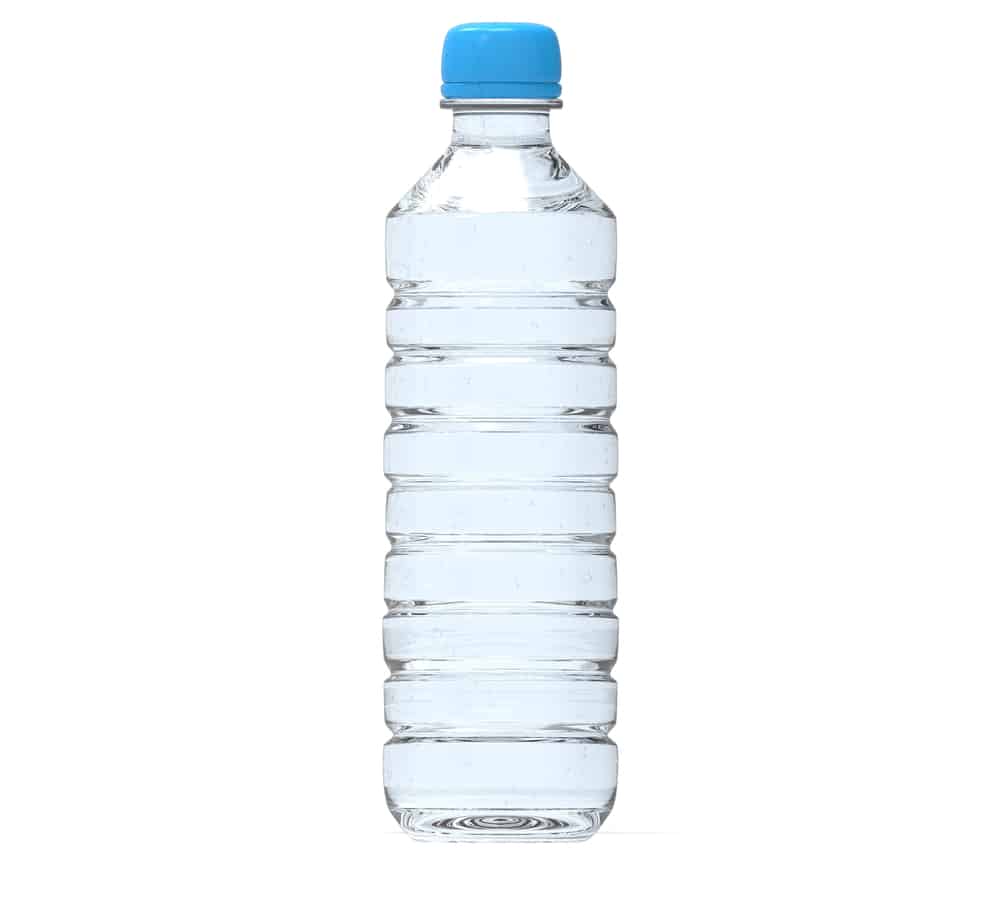
It should go without saying that water is a survival basic for any situation. In a survival situation water quickly becomes the most precious commodity.
1 Liter per day per person is really the bare minimum. So your 3 day Bug Out Bag should have at least 3 liters of water.
To expand your capability or survive longer than a couple of days you will need a water purification system. This can be as simple as boiling water and iodine tablets, or a serious water filter.
Here are some quality recommended products:
- Water Filter Bandana: a pocket handkerchief with a built-in 1-micron filter for in-the-field water treatment or for use as an improvised air contaminate mask
- LifeStraw Personal Filter: portable straw filter to be used anywhere. Recommended!
- Platypus Platy Collapsible Water Bottle: can be used for extra storage
- Backpacking Bucket: make water collection easier with a bucket
2. Food
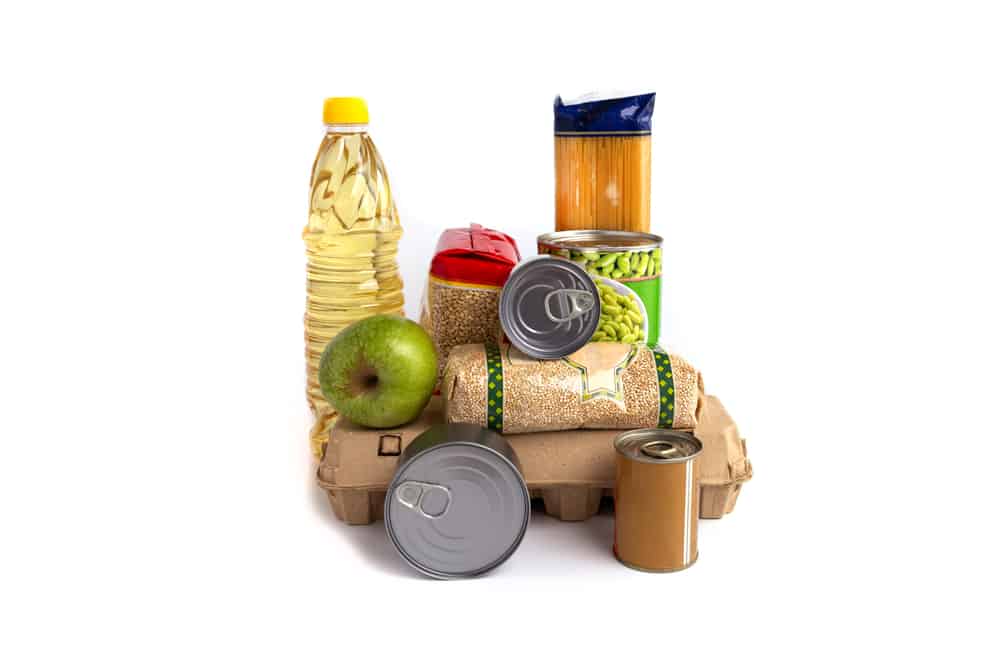
For a 3 day Bug Out Bag, backpack meals, emergency bars, and protein shake mix can be sufficient. Backpack meals are freeze-dried meals that you just add boiling water to. They are lightweight and last a long time. The protein shake mix works great because it’s dense-packed with nutrients and just needs water.
Obviously, you will need a longer-term food solution (such as specific survival food kits) in any type of wide-area catastrophe, but for your basic BOB, such category of meals are a good set up.
For a more deep-dive in this topic, check out a list of options for BOB food in this guide.
We recommend the following products:
- Mountain House Freeze Dried Food: different meals packed in small packets. Easy to carry. Just add water.
In summary, make sure to pack a combination of:
- Backpack meals (MREs)
- Emergency bars
- Protein shake mix (mix with water and drink)
3. Clothing
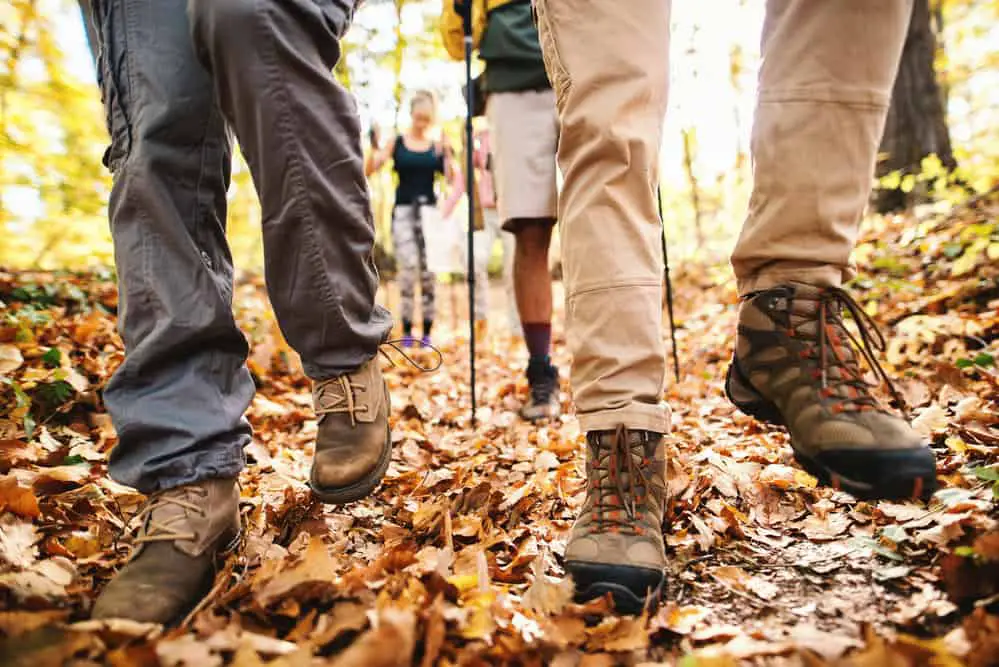
Your bug out bag clothes should be similar to what you would pack for a weekend backpacking trip.
- A pair of sturdy survival boots
- A pair of long pants (preferably not blue jeans)
- 2 Pairs of socks (preferably not cotton)
- 2 Shirts (Maybe 1 long sleeve and 1 short sleeve for layering)
- A jacket that is both warm and protection from rain
- Warm long underwear of some kind
- A hat
- A bandana
This list could go on for a while and many people would never dream of leaving their Bug Out Bag without twice that much, but in a pinch that set up could get you by for 3 days.
Be sure to plan for the weather in your area.
4. Shelter
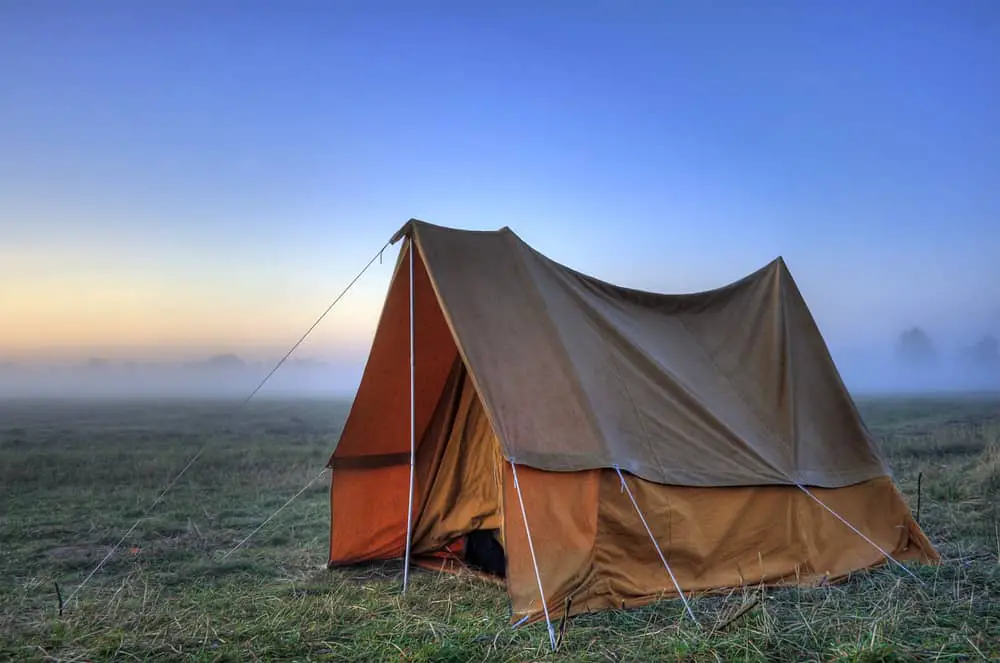
If you are going to survive for 3 days you are going to need protection from the elements and a warm dry place to sleep. You need at least:
- Some type of tent or tarp and a way to set it up
- A ground tarp for underneath your shelter to stay dry or a sleeping pad (Never underestimate the importance of this)
- Some type of bedroll, preferably a good sleeping bag.
We highly recommend the tarp below for a BOB:
- SUPERIOR QUALITY materials and precise fabrication go into each and every AquaQuest camping tarp....
- MOST WATERPROOF camping tarp on the market. The Defender's unique dual coating formula produces an...
Last update on 2024-04-24 at 12:22 / Affiliate links / Images from Amazon Product Advertising API
5. First Aid Kit
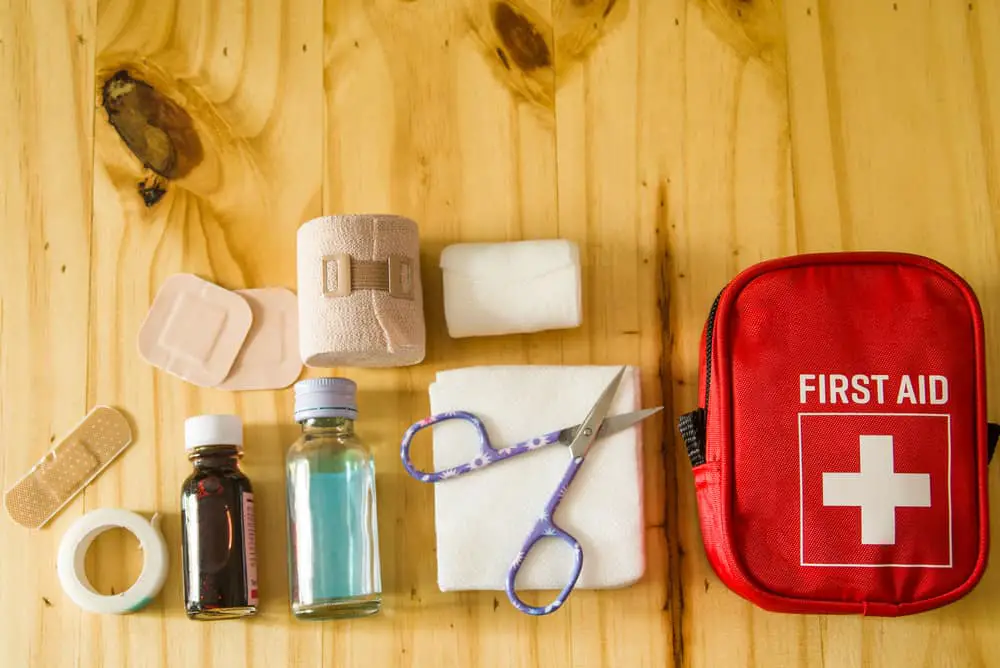
Trying to cover everything you need in your Bug Out Bag First Aid Kit is another article entirely to itself, probably several more. I won’t try to cover it in this article because I would surely leave something out.
The ideal thing to do is to build your own First Aid Kit instead of buying one of those prepackaged first aid kits that claim to have 1001 things to get you through any emergency. While some are OK, in my experience these types of kits are usually filled with a lot of stuff you are unlikely to need and not enough of the things you will probably need a lot of.
Plus, building your own first aid kit gives you an intimate knowledge of what it contains and how to use it. How many people buy one of those pre-made set ups and just assume they are prepared because there’s so much crap in it there must be what I need? Bad Idea.
However, what may be a good idea economically is to purchase a pre-made first aid kit and keep the things you need and remove the things you do not need. Then purchase supplemental items and fit it into your kit.
To this end, here are our recommended first aid kits you can buy to then customize:
- MyMedic MyFak First Aid Kit: a high-quality kit to be used for everyday needs. Use code SURVIVALCACHE15 for 15% off at checkout!
- Everlit Survival First Aid Kit
6. Basic Gear

Basic Gear sounds repetitive (what have I been talking about?) but it is my category for the things you absolutely cannot live without but don’t really fit well into another category. Many survivalists will not like this list because it is not exhaustive by any means, but again I will say: It will be enough to get you by for a couple of days.
Rain Gear – at least 2 ways to stay dry in the rain. Poncho and coat are good coupled with your Tent/Shelter. Recommended:
- No products found.
Fire – A bare minimum of 3 different ways to make fire (use fire starters). With that, you can get a flame but you will have to actually build the fire up too (use fire tinder). Recommended:
- EveryStryke Pro Lighter: cheapest all-rounded lighter (FREE offer).
- EveryStryke Matches: reusable matches that can light 15,000 times. (FREE offer)
- GoFire Fire Starters
Saw – You’re also going to need something to cut your firewood and a survival knife uses too much energy long term, ad we recommend a chainsaw. Recommended:
- Compact Wire Saw: easy-to-carry, affordable, and can cut wood easily (product is FREE, get yours while supplies last).
- Folding Hand Saw
Cooking – Bare minimum here is a small pot/large cup to boil water in for both drinking and freeze dried meals. A small backpacking stove and fuel are better. Recommended:
Light – At least 2 survival flashlights and a backup set of batteries for each. Recommended:
- Procharge Survival Flashlight: 1200 lumens. Compact design. Battery charger included.
- Evatac Taclite: Small footprint for BOB (FREE offer)
- Surefire E2D Defender: top of the line
Survival Knife – The most used and most versatile tool in your Bug Out Bag is your survival knife. Make sure to get a quality knife that can be multi-use. Recommended:
- Compact EDC Knife: affordable all-rounder (FREE offer)
- Gerber Bear Grylls: for beginners
- SOG Knife: All-rounder
We did a detailed hands-on review article on bug out bag knives specifically that you can check out.
Here are some more recommended products for your BOB:
Last update on 2024-04-24 at 18:32 / Affiliate links / Images from Amazon Product Advertising API
7. Weapons
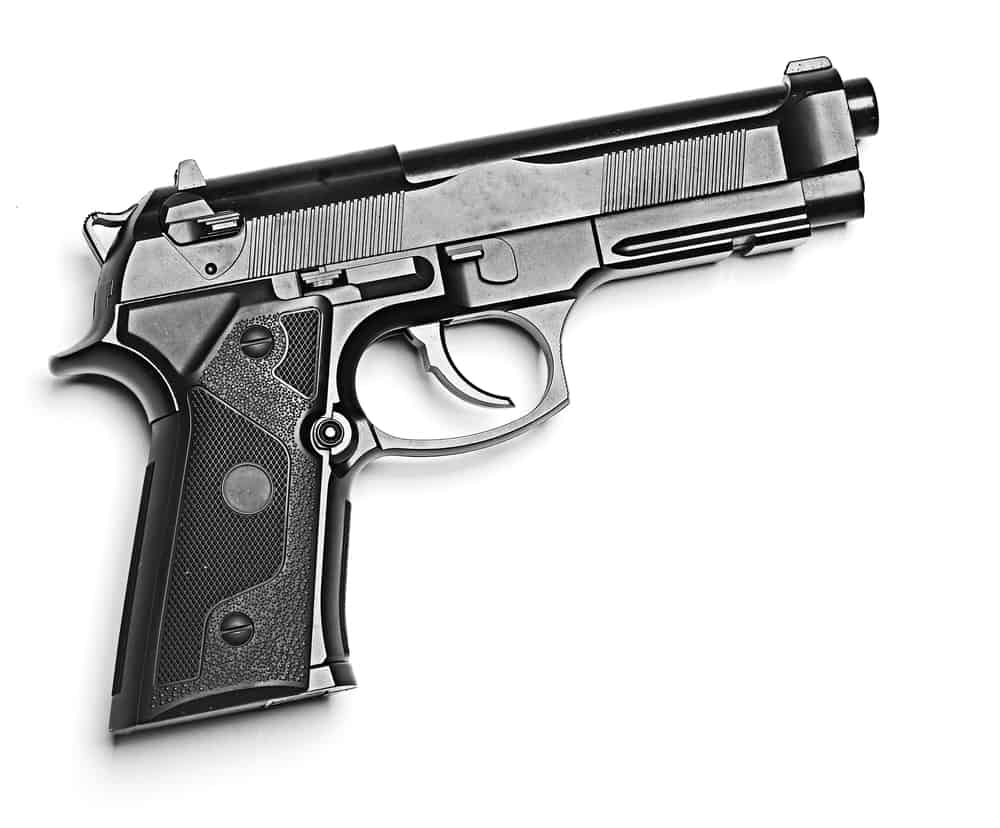
The fact of the matter is you are might be dealing with a “Without Rule of Law” situation, or close to it, and people are likely to do crazy things. Being prepared to defend yourself is part of the survivalist mindset.
Obviously a firearm of some sort is best for this. (Though not in all situations) I will not go into specifics about what type of gun you should bring because that is hotly debated and really a personal choice. Take what is comfortable to you.
Outside of guns your survival knife could be used as weapon if you had to. Also something as simple as a big walking stick, club, or even a multi-purpose survival shovel like this recommended one can be a strong deterrent for bad guys. It’s all about giving yourself options.
More about Survival Weapons:
Our Recommended Bug Out Bag List
To summarize, here is the ultimate list:
- Personal water filter (LifeStraw, Sawyer)
- Water filter bandana
- Collapsible water bottle
- Backpacking bucket
- Backpack meals (MREs)
- Emergency bars
- Protein shake mix
- Sturdy boots
- Long pants (waterproof)
- 2 pairs of socks (not cotton)
- 2 shirts (1 long sleeve and 1 short sleeve for layering)
- A jacket that is both warm and waterproof
- Warm long underwear
- Hat
- Bandana
- Tent
- Ground tarp
- Bedroll, or sleeping bag
- Quality first aid kit (or DIY kit)
- Poncho
- Matches
- Lighter
- Fire tinder
- Compact saw (or wire saw)
- A small pot and large cup for cooking
- Backpacking stove with fuel (ideal to have)
- Flashlights (2 of them)
- Backup batteries
- Knife
- Weapon (your choice, knife works)
- Tactical compact shovel
- Backpack (not colorful; something that won’t draw attention)
- Water purification tablets
- Duct tape
- Sewing Kit
Ready-To-Go BOBs (non-DIY options)
Once you get these basics covered you can begin to test and refine your bug out bag with other useful gear and prepare it for longer-term survival situations.
Not all of us have the time or expertise to put together a good bag. Make sure to check out the bags below if you just want one ready-to-go or a starter kit to get things going:
| KITS | DETAILS | ||
|---|---|---|---|

Top Overall BOB
|
|
Check Price on Amazon.com
|
|

Runner-Up
|
|
Check Price on Amazon.com
|
|

Medical BOB
|
|
Check Price on Amazon.com
|
Common Questions about BOBs
These are questions we have been asked over the years by our readers.
Why Put a Shovel in a Bug Out Bag?
A shovel is a great multitool and has a lot of different uses.
It can be used for digging fire pits, disposing of waste, chopping tool, self-defense tool, for digging through soft soil and snow, a throwing weapon, and transporting fire.
A small shovel is so versatile that it should be in everyone’s survival kit or pack.
Should I test my BOB before SHTF?
Yes! So many people buy premade BOBs or put one together and then store it in their homes. They do not test their BOB in real-life situations or just wear it to even know if it’s too heavy.
We put together a detailed look into how to test your bug out bag for SHTF situations.
Apart from gear, what else should be in a BOB?
Good question! We recommend also carrying critical documents in your bag. You never know when you may need them.
Where do I keep my bug out bag?
This is a common question we get. You should keep your BOB along an escape route or on your person. A more detailed discussion of this topic can be found here.
How to and how much ammo should be in my bag?
You need to consider the weight of the ammo, the amount you think you need, and how to carry it. We did a detailed deep-dive in this article.
How Heavy Should a Bug Out Bag Be?
The weight of the bag that you intend to carry is really important to think about when you are preparing it. You will need to know the weight that you will be able to comfortably carry for long periods of time if you need to. There is no use in packing a bag and not being able to lift it off the ground.
One of the best things that you can do is pack the heavier items nearer the top of the bag, so most of the weight is on your shoulders, rather than your lower back. You should also always test your bag on a walk or a run to make sure that you can carry it comfortably.
It is recommended that your bug out back should be around 10% of your own body weight. The maximum weight that you should try and carry is 20% of your body weight.
How Do You Lighten a Bug Out Bag?
Water is often one of the biggest issues when it comes to prepping your bug out bag. Many people automatically pack liters of water as you assume that you are going to need it. However, water is going to add a hefty amount of weight to your bag and this is something you should avoid.
Instead, pack your brain with knowledge on how to find your own water in different situations, so you don’t have to carry much around with you. Also, always be sure to carry a means of purifying and filtering water as that will cut down how much you will need to pack..
Another weight-saver is to pack items that can be used for more than one purpose instead of lots of individual things. A great example for this would be instead of carrying scissors, knives, a tin opener, and more, go for a multi tool or Swiss army knife. These can do many jobs instead of just one.
Another thing that you can do is try to limit the number of heavy food items that you are taking. While canned foods are great survival items due to the fact that they will have a longer shelf life, they are going to add a lot of weight to your bag.
Instead of taking canned foods, you should pack things like trail mix, protein bars, dehydrated meal bags, and dried fruit. These food items are much lighter.
Click here to find out more on how to lighten your bug out bag.
Where Should I Keep My Bug Out Bag?
Naturally, the first place that many people think to keep their bug out bag is in their home. After all, the majority of people will spend most of their time at home, so this makes a lot of sense.
If you are keeping your bag at home, then leaving it by the front door is a great option, as you can grab it quickly and easily on your way out. However, you should also be aware that you might not be home when a survival situation occurs.
You could be at work, grocery shopping, or miles away from home. So, this is not always a foolproof solution,
Another place that you can choose to stash your bug out bag is in your car, which makes sense if you drive everywhere you go. This way, no matter where you go, you will always be near your bug out bag.
If you are at home, your car is no more than a few meters from your house, and if you are out or at work, then your car will be nearby. However, this also has its downsides too. If you are leaving your bag in your car, the contents of the bag will be subject to hot and cold changing temperatures that can cause damage to the equipment in the bag.
Things like batteries and food might not hold up so well over time, so you would need to rotate and replace some things in the bag over time. As well as this, your car is not entirely secure, and someone may attempt to steal your bag.
There is no foolproof place to keep your bug out bag, as there will be pros and cons to every solution. You should think about what suits you best. If you are struggling for ideas, you can find out more here.
Why is it Called Bug Out Bag?
A bug out bag is called this because it derives from the bail-out bag emergency kit that is carried by military aviators. This bag will contain everything that you need to survive on your own for at least 72 hours.
How Much Ammo is in a Bug Out Bag?
The amount of ammo that you need to carry will depend on how many weapons you will be taking with you.
There is no right or wrong amount of ammo to take, as it would all depend on the survival situation that unfolds.
A zombie Apocalypse is going to require a lot more bullets than a typical survival situation, but you never know. Keep in mind that the more ammo you carry, the heavier your bag will be.
For more information on storing ammo in your bug out bag, click here.
How Big Should a Go Bag Be?
A go bag is typically anywhere between 40 and 65 liters. Anything under 35 liters is probably going to be too small, and anything above 65 liters is just unnecessary.
You should always plan what you want to carry to ensure that your bag is big enough to hold all of your things. Consider getting a front-loading bag, so you don’t have to remove everything to get to the stuff at the bottom.






